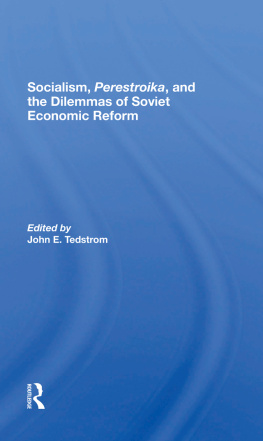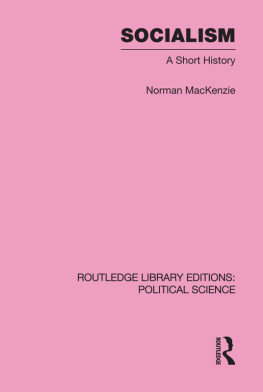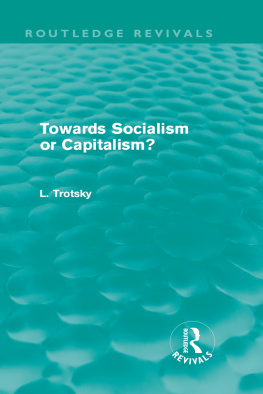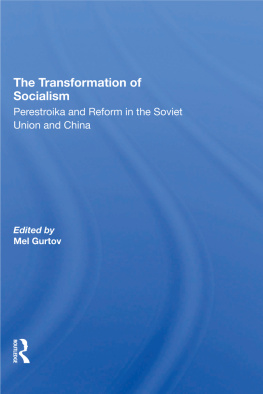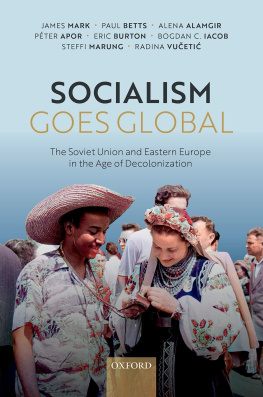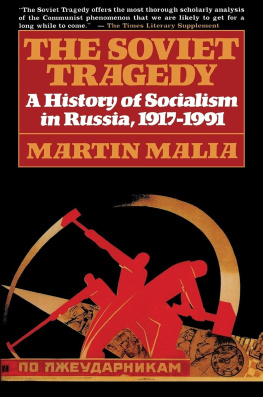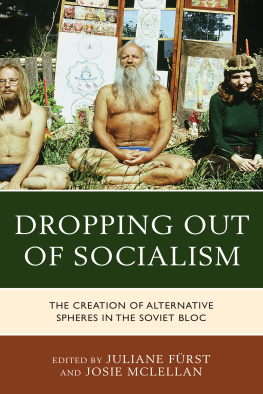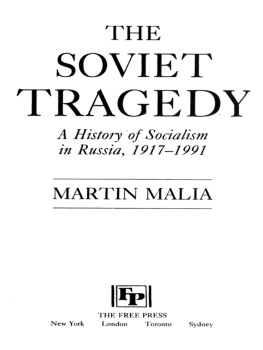Mark Sandle - A Short History of Soviet Socialism
Here you can read online Mark Sandle - A Short History of Soviet Socialism full text of the book (entire story) in english for free. Download pdf and epub, get meaning, cover and reviews about this ebook. genre: History. Description of the work, (preface) as well as reviews are available. Best literature library LitArk.com created for fans of good reading and offers a wide selection of genres:
Romance novel
Science fiction
Adventure
Detective
Science
History
Home and family
Prose
Art
Politics
Computer
Non-fiction
Religion
Business
Children
Humor
Choose a favorite category and find really read worthwhile books. Enjoy immersion in the world of imagination, feel the emotions of the characters or learn something new for yourself, make an fascinating discovery.
- Book:A Short History of Soviet Socialism
- Author:
- Genre:
- Rating:5 / 5
- Favourites:Add to favourites
- Your mark:
- 100
- 1
- 2
- 3
- 4
- 5
A Short History of Soviet Socialism: summary, description and annotation
We offer to read an annotation, description, summary or preface (depends on what the author of the book "A Short History of Soviet Socialism" wrote himself). If you haven't found the necessary information about the book — write in the comments, we will try to find it.
A Short History of Soviet Socialism — read online for free the complete book (whole text) full work
Below is the text of the book, divided by pages. System saving the place of the last page read, allows you to conveniently read the book "A Short History of Soviet Socialism" online for free, without having to search again every time where you left off. Put a bookmark, and you can go to the page where you finished reading at any time.
Font size:
Interval:
Bookmark:
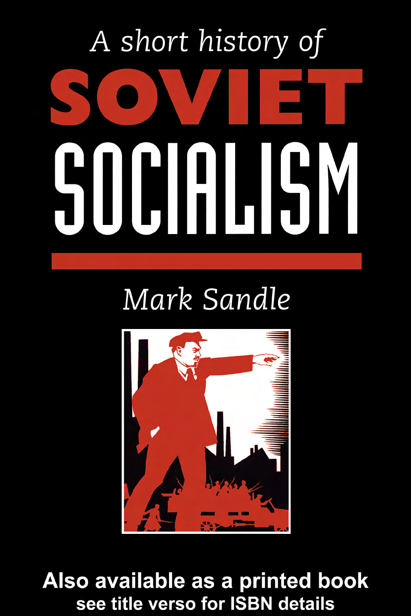 A short history of Soviet socialism
A short history of Soviet socialism 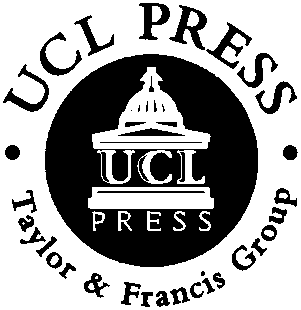 A short history of Soviet socialism Mark Sandle De Montfort University Mark Sandle, 1999 This book is copyright under the Berne Convention. No reproduction without permission. All rights reserved. Published in the UK in 1999 by UCL Press UCL Press Limited Taylor & Francis Group 1 Gunpowder Square London EC4A 3DE and 325 Chestnut Street 8th Floor Philadelphia PA 19106 USA This edition published in the Taylor & Francis e-Library, 2005. To purchase your own copy of this or any of Taylor & Francis or Routledges collection of thousands of eBooks please go to www.eBookstore.tandf.co.uk. The name of University College London (UCL) is a registered trade mark used by UCL Press with the consent of the owner.
A short history of Soviet socialism Mark Sandle De Montfort University Mark Sandle, 1999 This book is copyright under the Berne Convention. No reproduction without permission. All rights reserved. Published in the UK in 1999 by UCL Press UCL Press Limited Taylor & Francis Group 1 Gunpowder Square London EC4A 3DE and 325 Chestnut Street 8th Floor Philadelphia PA 19106 USA This edition published in the Taylor & Francis e-Library, 2005. To purchase your own copy of this or any of Taylor & Francis or Routledges collection of thousands of eBooks please go to www.eBookstore.tandf.co.uk. The name of University College London (UCL) is a registered trade mark used by UCL Press with the consent of the owner.
ISBN 0-203-50027-X Master e-book ISBN ISBN 0-203-55919-3 (Adobe eReader Format) ISBNs: 1-85728-354-6 (Print Edition)HB 1-85728-355-4 (Print Edition)PB British Cataloguing-in-Publication Data A catalogue record for this book is available from the British Library. To my mother and father, with love. Contents List of Figures Preface Introduction Part One:The genesis of Soviet socialism Chapter 1: The crucibles of Russian socialism Part Two:The emergence of a Soviet model:fromthe revolution to NEP Chapter 2: The revolutionary settlement: state capitalism, technocracy and the transition to socialism Chapter 3: War communism and Soviet socialism: a technocratic orthodoxy? Chapter 4: NEP and Soviet socialism: departing from orthodoxy? Chapter 5: Stalin, Trotsky and Bukharin: debating a new orthodoxy Part Three:Orthodoxy in power:from Stalin toBrezhnev Chapter 6: Stalinist Socialism: creating a country of metal, 192939 Chapter 7: Khrushchev and Soviet socialism: burying Stalin, reviving Lenin? Chapter 8: Brezhnev and developed socialism: technocratic socialism in power vi Part Four:The demise of scientific socialism Chapter 9: Gorbachev and Soviet socialism: the rise and fall of Humane Democratic Socialism Conclusion: history and Soviet socialism Chronology of party conferences and congresses Chronology of main ideological texts of Soviet socialism Glossary of key terms/acronyms Select bibliography Index List of Figures Figure 1.1 Bolshevism in power: the institutional structure of the Soviet State after October 1917. Formal operation of system. Figure 2.1 Bolshevism in power: the institutional structure of the Soviet State after October 1917. The transferral of power after 1917.
Figure 7.1 Organizational changes to the Soviet economy under Khrushchev 195763. The structure prior to 1957 (simplified version): the centralized branch system. Figure 7.2 Organizational changes to the Soviet economy under Khrushchev 195763. The Sovnarkhoz reforms of 1957: decentralized regional economic councils. Figure 7.3 Organizational changes to the Soviet economy under Khrushchev 195763. The further reorganizations of Nikita Khrushchev: recentralization creeps back.
Figure 7.4 Organizational changes to the Soviet economy under Khrushchev 195763. Once more on the reorganizations of Khrushchev: a new regional structure. Figure 7.5 Organizational changes to the Soviet economy under Khrushchev 195763. Reorganization mania: 1962 and all that. Preface This book has grown out of my personal attempts to understand and make sense of the Soviet period of Russian history from 1917 91, and the subsequent hours spent trying to communicate this to numerous students of mine. The contours of such a projecta broad, interpretive appraisal of the Soviet periodinevitably means that I owe a great debt to numerous scholars who have trodden this path before me, many of whom it is not possible to acknowledge in a direct way.
The present book would not have been possible without the help and inspiration of many friends and colleagues. I would like to take this opportunity to note my gratitude to a whole range of teachers who helped to nurture my interest in history in general, and in Russia in particular: Gwynne Lewis, Chris Read, David Washbrook, Maureen Perrie, Bob Davies, Ron Amann. I have been particularly fortunate to work in a history department at De Montfort University with colleagues who have been constantly supportive, friendly and an inspiration to me. To David Ryan, Nick Carter, Panikos Panayi, Jason McDonald, John Martin, Chris Goldsmith, Pierre Lanfranchi, Matt Taylor, Daryl Adair, lan Spencer, David Thorns, Wray Vamplew, and David Sadler, many thanks. A special note of thanks to David and Ed, who were so generous with their time, and whose suggestions and criticisms were invaluable in improving this work. Any flaws and errors remain the full responsibility of the present author.
At UCL, Aisling Ryan has been a supportive and patient voice at critical moments. Finally, a work such as this incurs many debts with ones friends and family. I am much indebted to the support, encouragement and patience (!) of Witty without whom this work might never have been completed. I am also indebted to my childrenLuke and Bethanywithout whom this work would have been completed much earlier, but life would have been much less colourful and far too predictable! Finally, this book is dedicated to my parents, who have always been there for me. Introduction The dust has settled after the collapse of communism. The greater access to archives and the greater opportunities for dialogue and collaboration with Russian scholars are opening up new fields for research and critical inquiry into some of the long-neglected aspects of the Soviet era of Russian history.
This is a most welcome development. At the same time, this new situation is also renewing some old debates and disputes. One of the enduring issues which has divided scholars is the question of how important were ideas to the course of Soviet history? Was ideology a profound determinant of events? Or was it merely a smokescreen, which rationalized a set of actions that promoted or defended the interests of particular groups or individuals? Or are these views too starkly drawn to encapsulate the complex relationship between ideas and political practice in the USSR? It is traditional to assert that the basic historiographical divide in Soviet history lies between the totalitarian or counter-communist school on the one hand, and the revisionist school on the other. The totalitarian interpretation, arising out of the polemics of the cold war, looked to establish the origins of the Stalinist terror and dictatorship in the ideology of Marxism-Leninism and in the theory and practice of the Bolshevik party before and after 1917. Derived from the writings of Leonard Schapiro, Martin Malia, Robert Conquest, Richard Pipes and others, this approach identified a clear continuity between Marxism, Leninism and the Stalinist period. Transposed to the debate about the role of ideology, the totalitarian viewpoint asserted that there was a profound degree of ideological continuity between Lenin and Stalin, and that these ideas fundamentally shaped the nature of the Stalinist system.
Revisionist scholarship (defined by Sheila Fitzpatrick as scholarship that is explicitly abandoning the totalitarian model) has explored the broader socio-economic and cultural context of the early Soviet period, examining history from below. Eschewing the totalitarian emphasis upon high politics, the state and events in Petrograd and Moscow, revisionists have explored the actions and reactions of workers, peasants, soldiers and sailors, of events in the regions. One of the outcomes of this detailed research has been that a much more diverse, 2 INTRODUCTION complex, sprawling, chaotic picture of Soviet history emerges. As Fitzpatrick describes, At present, on every major issue of Soviet history, historians seem to be submerging themselves in data and periodically surfacing with a single astonished cry: improvisation. Chaos is almost becoming the dominant principle of Soviet development as the old explanatory structures disintegrate Political leaders stagger from one unexpected crisis to another, pragmatically muddling through. Their minds are empty of ideologyand only circumstances govern their actions.
Next pageFont size:
Interval:
Bookmark:
Similar books «A Short History of Soviet Socialism»
Look at similar books to A Short History of Soviet Socialism. We have selected literature similar in name and meaning in the hope of providing readers with more options to find new, interesting, not yet read works.
Discussion, reviews of the book A Short History of Soviet Socialism and just readers' own opinions. Leave your comments, write what you think about the work, its meaning or the main characters. Specify what exactly you liked and what you didn't like, and why you think so.


